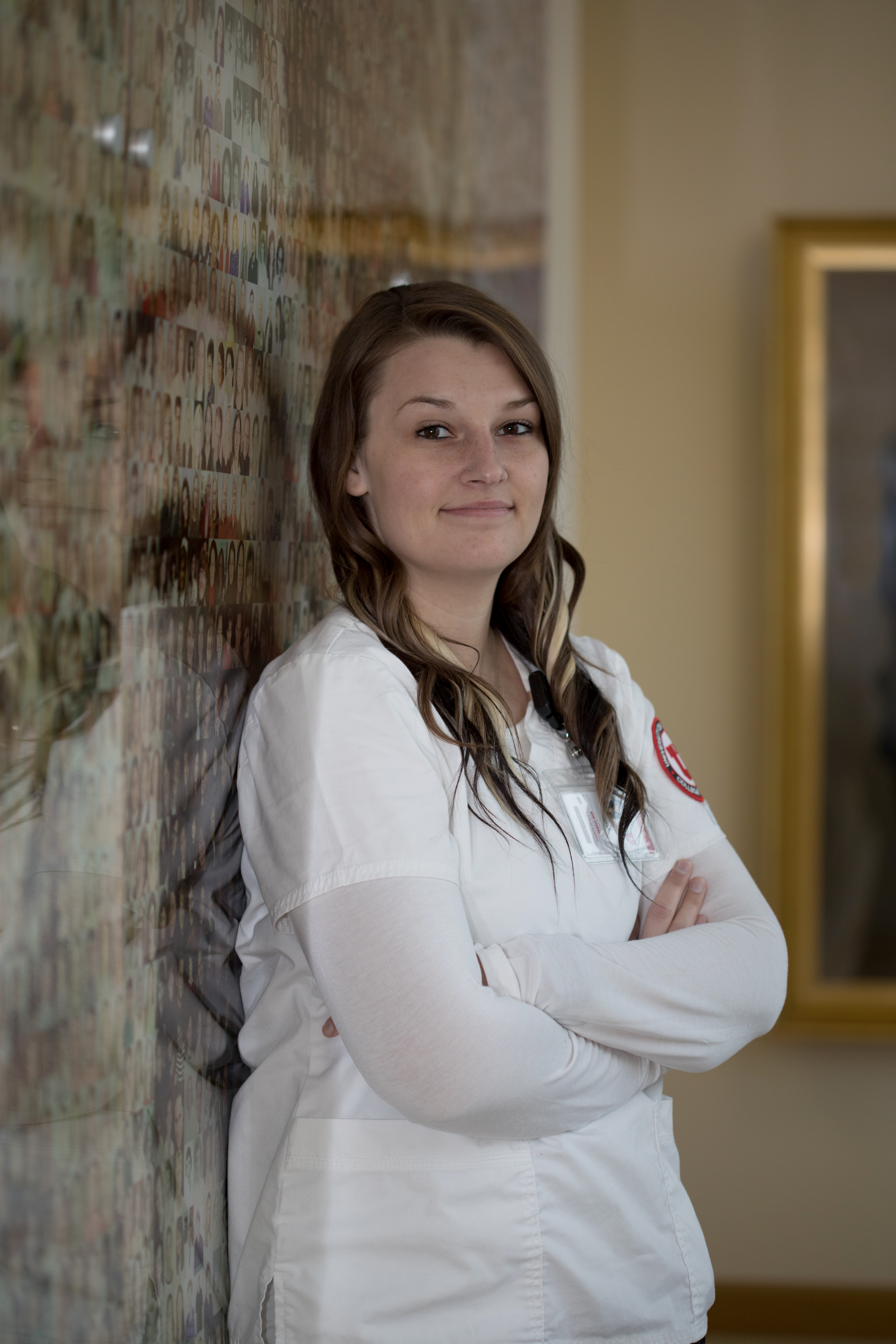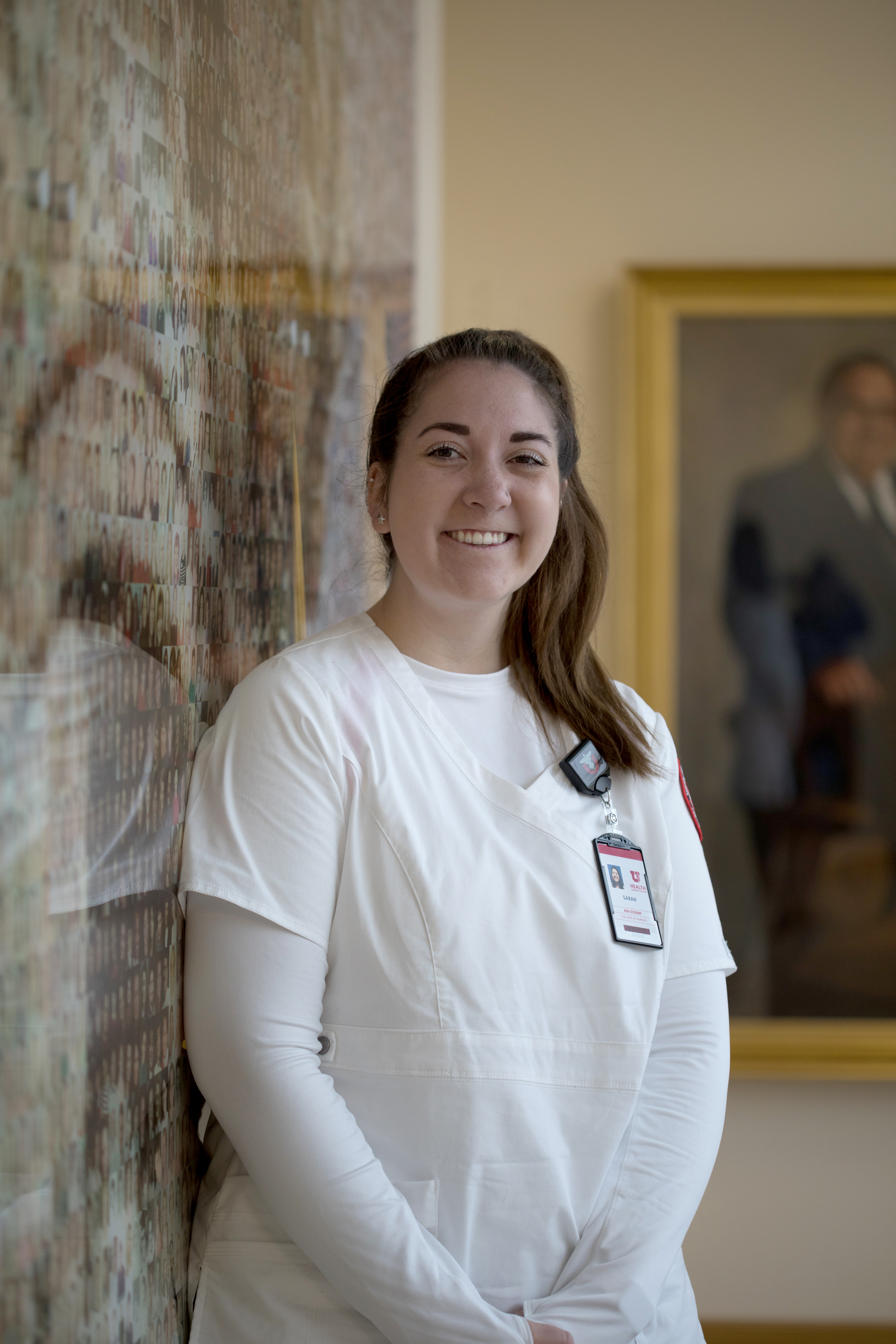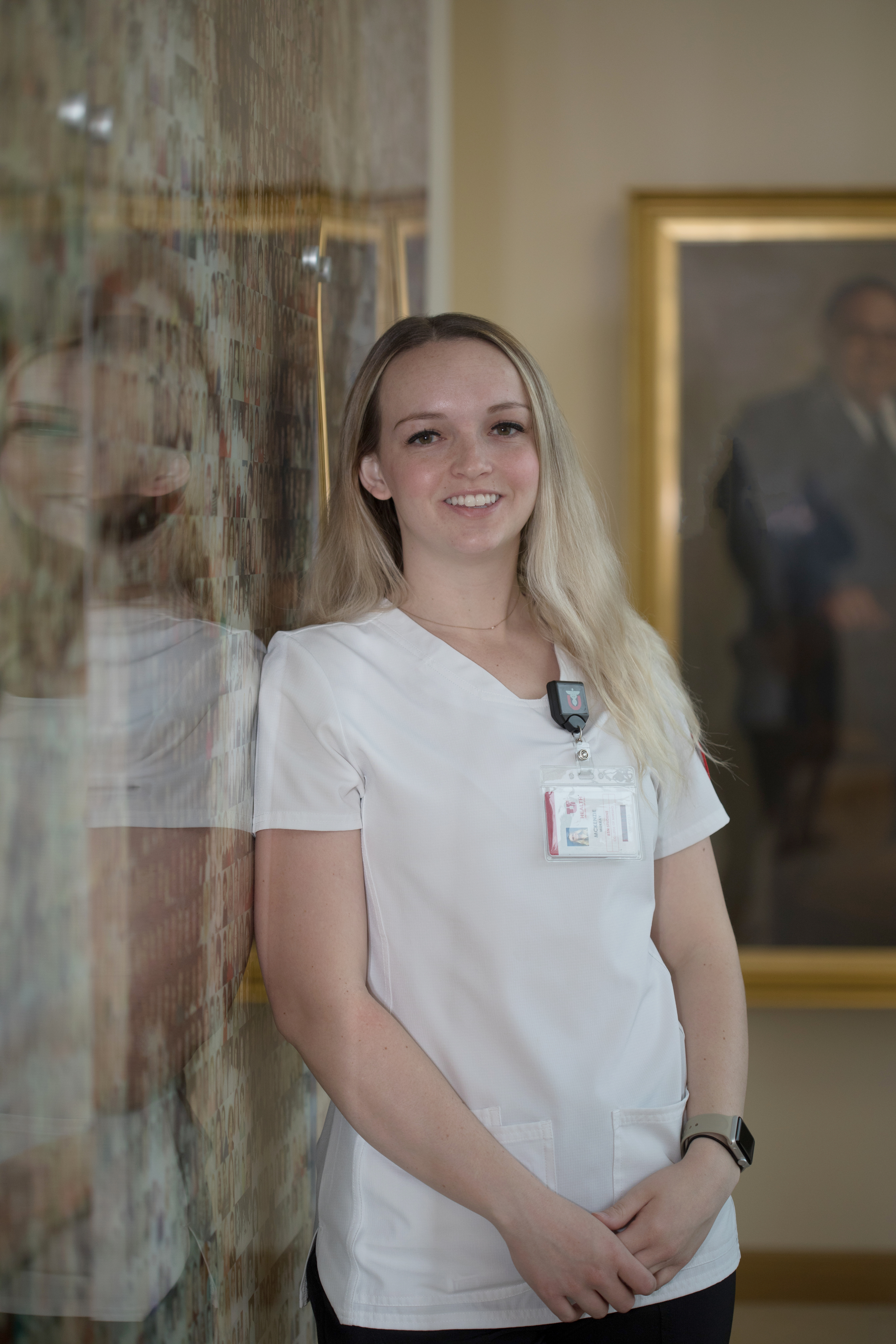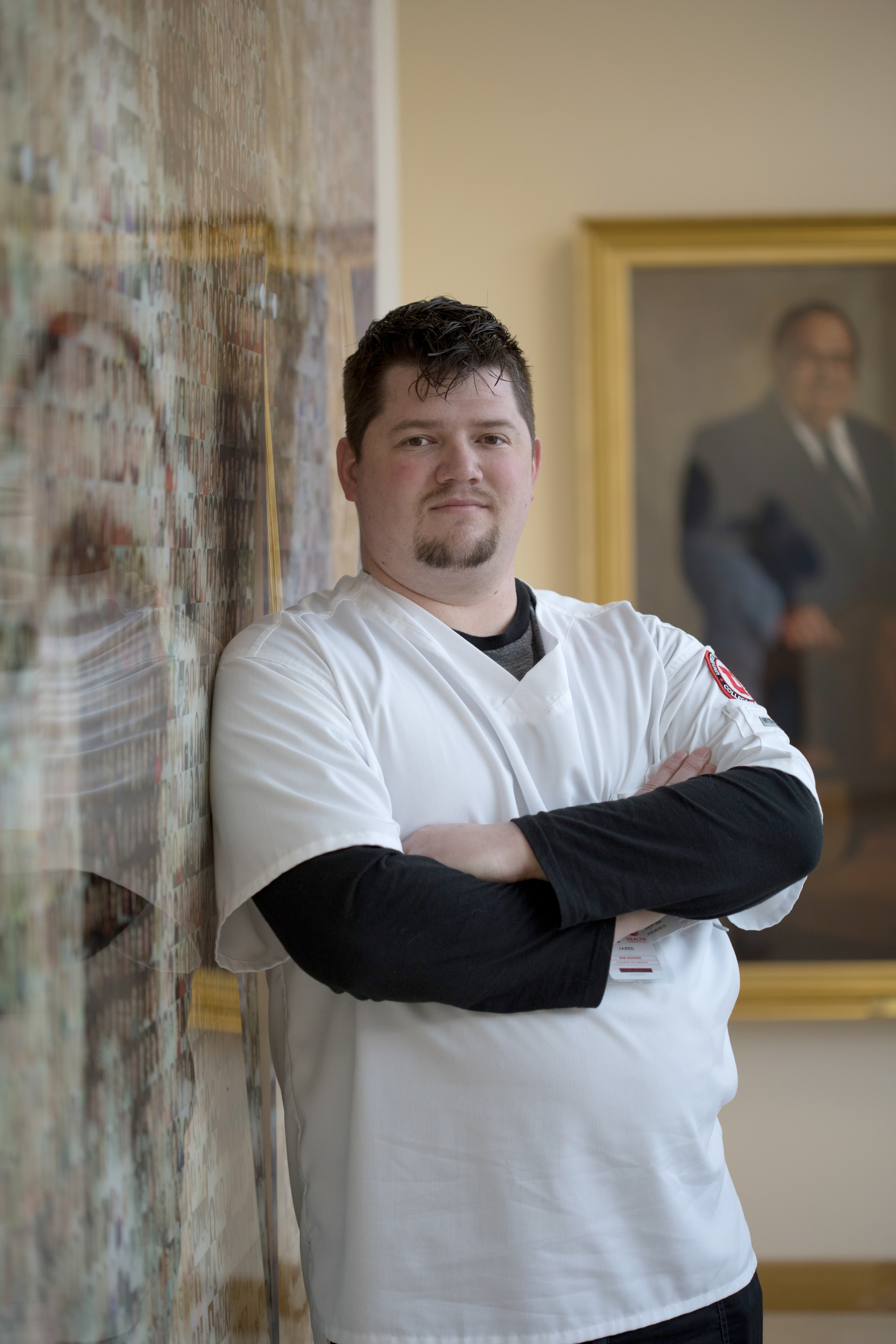Julia Packard applied—over and over, it seemed—to study at the University of Utah College of Nursing.
She graduated with an associate’s degree in 2015 and works as a 911 emergency dispatcher, but it took four tries (including the time when directions on how to complete a background check went to an old email) for the 26-year-old to be admitted to the college. Over the years, Packard watched the application process change—from a typical, GPA-ACT score-resume-and-references model to a new “holistic admissions” process, which includes videotaped questions and answers, and new questions focused on leadership and volunteerism.
Packard credits the changes with advancing her admission. “I applied a couple of times and didn’t get in. I was ready to give up,” she says. Holistic admissions “is probably what saved me.”
Packard will graduate with a bachelor’s of science in nursing degree in the Class of 2020—the first full cohort of nursing students to have gone through the rigorous vetting.
In the highly competitive world of nursing school enrollment, a successful application can be part magic, part strategy. The American Association of Colleges of Nursing (AACN) estimates nursing schools turned away more than 56,000 qualified applicants nationwide from undergraduate programs in 2017. With more than 400 applicants for just 144 open spots each year for the pre-licensure nursing program, the University of Utah College of Nursing’s admissions process has become equally daunting. In an effort to even the playing field, college faculty and staff have worked over the past two years to fine-tune a model meant to make admission accessible and fair to all students, eliminating the possibility of unconscious and overt bias, while also boosting diversity among the college’s student body.

“I applied a couple of times and didn’t get in. I was ready to give up,” she says. Holistic admissions “is probably what saved me.”
--Julia Packard, 26, Class of 2020
“Traditionally, admission criteria was based on a GPA and test scores and that was it. Never mind that you were unbelievable in every other facet of your life, but maybe you didn’t get a 4.0,” adds Sherri Evershed, an assistant professor who led the College of Nursing task force that developed the program in the fall of 2017. “We want to look at the whole person.”
Over several months, the task force adopted a four-phase process, starting with the basics--a minimum 3.0 GPA, professional references, work history and prerequisites--and ending with those videotaped segments and final review by the Baccalaureate Admissions and Advancement Committee. Those who don’t meet the initial requirements are simply eliminated from consideration. Those who do, move on.
“Although that seems quite rigid, everybody has the same directions and the same requirements,” says Connie Madden, assistant dean for the baccalaureate program and student services. “It’s one step in moving forward.”
Phase Two consists of an essay and professional reference. Students are able to describe how they have provided service to others, demonstrate responsibility, meet deadlines and use time effectively. References are required to rate each applicant’s organizational skills, teamwork and emotional maturity. References from co-workers or colleagues receive a lower score than those from impartial supervisors. And the college will not accept references from prominent family members or friends.

“When I found out GPA wasn’t the only consideration, I decided I had to start doing other things. You have to try to strike a balance between leadership, volunteerism and academics. My GPA went down as a result. I kept thinking: Is this enough? Is what I’m doing enough? At the same time, it’s good that it’s vague. If you overthink it, you might not be true to yourself.”
--Sarah Czaja, 20, Class of 2020
Next, potential students are required to respond in writing and in videotaped responses to four questions about respect, integrity, responsibility and compassion. The questions range from, “Describe how you work with people of diverse backgrounds,” to, “Describe something you have learned from caring for and helping others.” Applicants’ answers are rated based on a rubric. Then undergraduate faculty evaluate them on other characteristics such as non-verbal communication, appearance, grooming, posture and confidence.

“I hated doing the videos. It was nerve-wracking. I met with two advisors to help me work on my answers. But looking back, I think the reviewers truly got to know the person, to know me.”
--McKenzie Murray, Age, Class of 2020
If faculty are concerned about a student, they flag the application and two additional faculty review the issue. Finally, each student’s application is sent to the Baccalaureate Admissions and Advancement Committee for a final phase of review.
Evershed says the new process makes the line between a successful application and an unsuccessful one very clear, leaving little room for debate among the reviewers and saving faculty and prospective students precious time.
“We looked at this very hard,” she says. “We have 20-year-old return missionaries and 58-year-old attorneys applying to our program. We can’t give someone more points if they’ve been a volunteer for 30 years versus two years. And anyone who has stayed home to raise three or five children knows the responsibility and organizational skills that takes. We include all of that.”

“It was a little daunting. I’m older. I was in the Army for six years, all over—El Paso, Afghanistan, Washington. I’ve got kids. I spent the past three years taking care of them while my wife was deployed in the Air Force. I felt at a disadvantage. But I still made it!”
--Jared Richardson, 31, Class of 2020
AACN has encouraged nursing schools to adopt holistic admissions as a way to consider the whole student’s experience, while simultaneously improving diversity among the nursing workforce. A survey by the Urban Universities for Health of schools that use the more complex application process found that holistic admissions boosts the numbers of underprivileged and minority students at schools while not significantly decreasing average GPAs, test scores and graduation rates. National Institutes of Health (NIH) researchers report that holistic admissions processes have been adopted by 93 percent of dentistry schools, 91 percent of medical schools, 82 percent of public health schools, 78 percent of pharmacy schools, and 47 percent of nursing schools.* The University of Utah School of Medicine also uses holistic admissions. AACN calls the College of Nursing a “top leader in the country” for its new application process.
The new review process is not meant to disadvantage obviously bright, accomplished students, says Dean Barbara Wilson. It’s simply an effort to level the playing field. “Holistic admissions allows students from educationally or socially disadvantaged backgrounds to have an equal chance with others who may have had the advantage of growing up economically comfortable,” she says. In the end, it’s all about excellent patient care. As patient populations become more diverse, nurses need to be able to provide culturally appropriate and sensitive care. Nationally, African and Hispanic Americans are the fastest-growing segments of the U.S. population, but account for just under 17 percent of nurses and 6 percent of physicians according to a study from the Association of American Medical Colleges.** By 2050, minority populations are projected to account for more than half of the country’s population.
“One criticism of healthcare has always been that the providers don’t represent the patients that they serve. For example, nurses have traditionally been women, and white women,” Wilson says. “The disadvantage to the patient is that we don’t look like them, we don’t represent them, and we may not completely have the cultural background to understand them.
“We’re striving to ensure that the graduates we produce are more representative of the populations that we serve,” she adds. “The only way to do that was to take a critical look at our admissions processes and ensure that we are still maintaining the rigor of our programs while allowing more diverse students an equal opportunity to be admitted.”
Several College of Nursing faculty are working on two other projects that will improve the scope of nursing education and boost diversity among the student body (see Page X). “We know that if we continue to use the same metrics we’ve always used, we’re going to continue to end up with the same students we’ve always admitted,” Wilson adds. “But in healthcare, where we have to prepare providers who have the ability to better care for complex patients from diverse populations, we have to do something different.”
*Urban Universities for Health. (2014). Holistic admissions in the health professions. Retrieved from http://urbanuniversitiesforhealth.org/media/documents/Holistic_Admissions_in_the_Health_Professions.pdf
**Association of American Medical Colleges. (2006). America needs a more diverse physician workforce. Retrieved from www.aamc.org/download/87306/data/